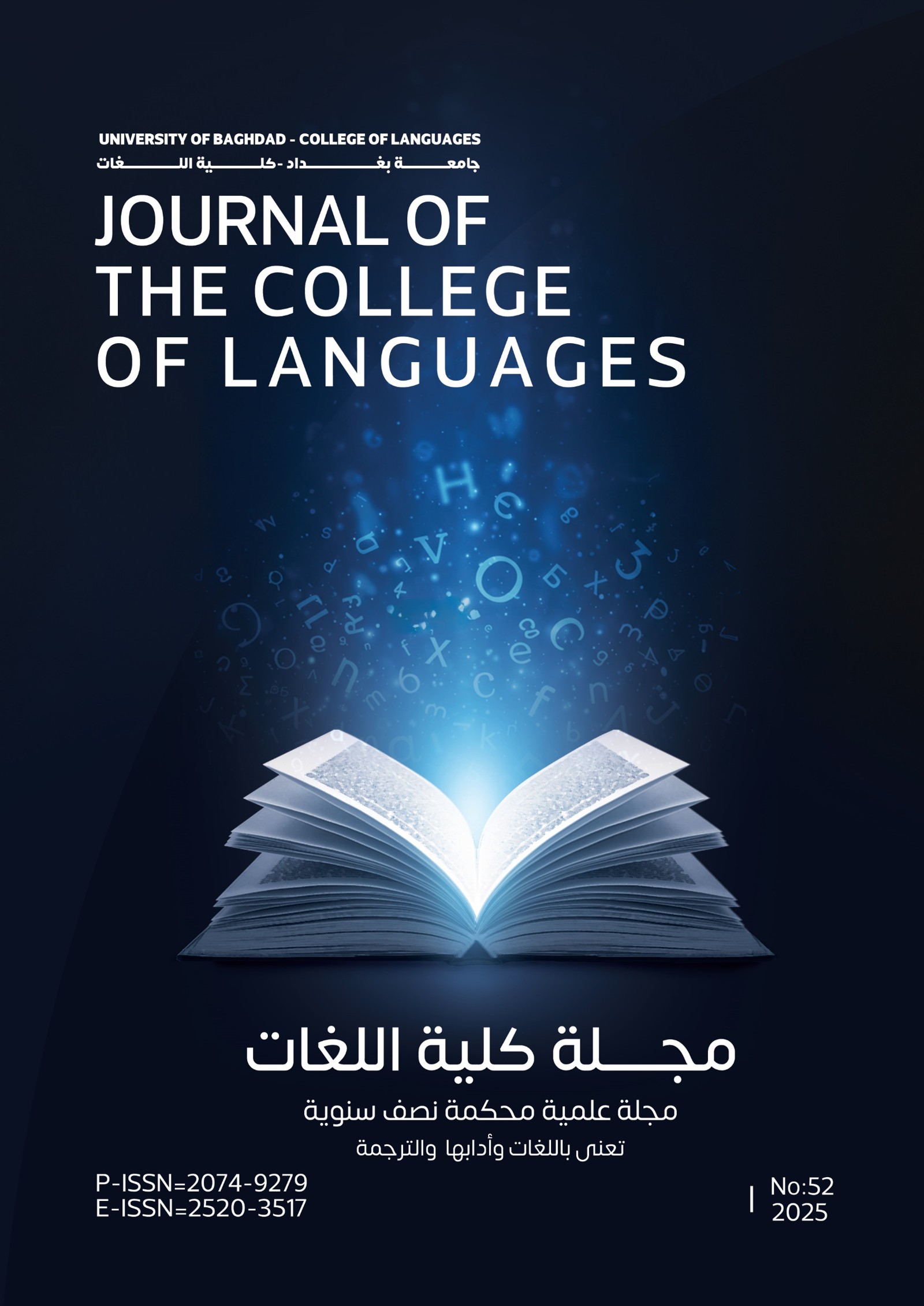To Domesticate or to Foreignize: An Approach to Translating Fables and Fairy Tales
DOI:
https://doi.org/10.36586/jcl.2.2022.0.45.0026Keywords:
Children literature, domestication, foreignization, fairy tales.Abstract
The present study deals with the strategies used in the Arabic translations of the most popular genres of children’s literature; namely fairy tales and fables as an attempt to identify the best methods and strategies to be adopted in translating these genres to fulfill the ultimate purpose of enriching the children’s knowledge in addition to attracting their interest and arousing the joy sought for in every piece of literature.
The study sets off from three dominating trends: the first calls for the adoption of domestication strategy of translation as the most appropriate and effective strategy in translation for children. In the same line, the second opposes using the foreignization strategy, while the third trend advocates for the joint employment of various strategies to fulfill certain requirements and needs that would be called upon within the context such as didactic purposes.
Throughout the process of examining and verifying the theses of these trends, samples of translations of the genres are chosen based on the most popular and well known fairy tales and fables either circulated in written form or televised as movies or cartoons; namely Hans Christian Andersen’s Fairy Tales and Aesop’s Fables. These samples are subjected to translation quality assessment to come out with a quality statement to highlight their merits and demerits. The receptors’ (children) impact is also sought via conducting a field study that has been designed for children of two age groups defined by specialized scholars as intended receptors of the genre.
(Received on 25/2/2014 - Accepted on 30/3/2014 - Published on 2/1/2022)
References
Abu Maal, A. (1988). Adab Alatfa ̃l: Dira ̃sa waa Taţbyq. ( The literature of Children: A Study and Application ). Amman: AlShoru ̃q Int. publication.
Aesop’s Fables. (n.d). Retrieved October 20, 2012, from http://www.planetpdf.com/.
Al-Qiani, J. (2000). Translation Quality Assessment. Strategies, Parameters and Procedures. Meta: Translator's Journal, XLV, 3, 497-519.
AlHiti, H. N. (1986). Adab AlAtfa ̃l: Falsafatahu, Finu ̃nahu, Waşa ̃’iţahu (Children’s Literature: Its Philosophy, Artistic Tools and Methods ). Cairo: State Establishment of Publishing.
AlLaythy, A. ( n.d). Tarjamat Qisas Isop AlKhurafya ( Translation of Aesop’s Fables ). International Association for Arabic Translators. Retrieved December 10, 2012, from http://www.atinternational.org/.
AlSaqa, M. & AlSahar, S. (1977). AlQaşaş AlḪakym LilFailasu ̃f Isop ( The Wise Stories of Aesop, The Philosopher). Cairo: Egypy Publishing House.
Andersen, H. C. (2010). Andersen's Fairy Tales. (J. H. Stickney, Ed.) Project Gutenberg's Hans Andersen's Fairy Tales. Retrieved October 20, 2012, from http://www.gutenberg.org/
Catford, J. C. (1965). A Linguistic Theory of Translation. Oxford: Oxford University Press.
Dickins, J, Hervey. S. & Higgins, I. (2002): Thinking Arabic Translation. A Course in Translation. London: Routledge.
Even-Zohar, I. (2000). The Position of Translated Literature within The Literary Polysystem . In L. Venuti, The Translatoion Studies Reader (192-197). London: Routledge.
Gentzler, E. (1993). Contemporary Translation Theories. London: Routledge.
Hans Christian Andersen’s Fairy Tales. (n.d.). Retrieved April 22, 2013, from Hans Christian Andersen’s Fairy Tales. http://www.blackmask.com
Hervey, S. & Higgins, I. (1992): Thinking Translation. A Course in Translation Method: French to English. London: Routledge
House, J. (1977). A model for translation quality assessment. Meta, 22: 103-109.
House, J. (2001). Translation quality assessment: linguistic description versus social evaluation. Meta, 46: 243-257
Hunt, p. (Ed.). (2005). International Companion Encyclopedia of Children's Literature. London: Routledge.
Imam, A. I. (2003). Ḫikaya ̃t Isop: Dira ̃sa wa Ta^6lyqwa Tarjama ( Aesop’s Fables: A Study, Commentary and Translation ). Baghdad: AlMada House.
Klingberg, G. (2008). Facets of Children's Literature Research. (Ed.) Stockholm: The Swedish Institute for Childrren's Books.
Munday, J. (2001). Introducing Transaltion Studies: Theroies and Applications. London and New York: Routledge.
Nida, E. (1964). Toward a Science of Translating. Leiden: Brill.
Nord, C (1991). “Scopos, Loyalty and Translational Conventions.” Target, 3,1: 91-109
Nord, C. ( 1997 ). A Translation-Oriented Model of Text Functions. TEFLIN
Journal, 17, 2: 39-45.
Nord, C. (2006): Translating as a Purposeful Activity. Functionalist Approaches Explained. Manchester: St. Jerome
Oittinen, R. (2000). Translating for Children. New York and London: Garland.
Shihaata, H. (1994). Adab AlŢifil Al6arabi: Dirasa ̃t wa Buhu ̃th (Arab Children’s Literature: Studies and Researches). Cairo: Egyptian Lebanese House.
Shavit, Z. (1986). Poetics of Children's Literature. Athens and London: The University Of Georgia Press.
Tabbert, R. (2002). Approaches to the translation of children’s literature. A review of critical studies since 1960. Target, 14(2), 303-351.
Tawfyq, A. Kh. (1988). Hikaya ̃t Andersin ( Andersen’s FairyTales ). Cairo: AlHila ̃l House for Publishing and Printing.
Venuti, L. (1995). The Translator's Invisibility: A History of Translation. New York: Routledge.
Venuti, L. (2000). Strategies of Translation. In M. Baker (Ed.), Routledge Encyclopedia of Translation Studies. London and New York: Routledge.
Younis, A. (1986). Ḫikayat Andersin ( Andersen’s FairyTales ). Baghdad: AlMada House.









